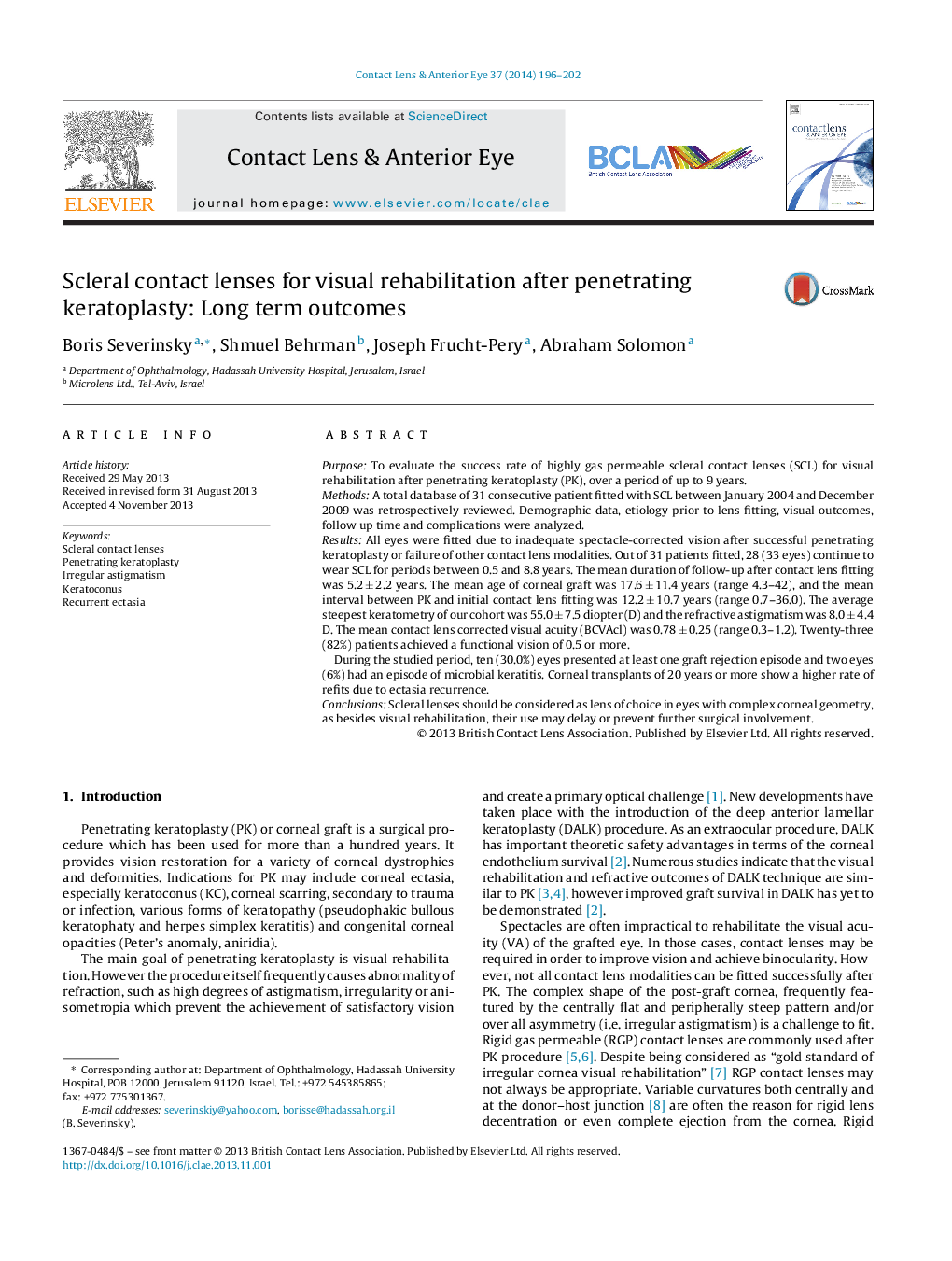| Article ID | Journal | Published Year | Pages | File Type |
|---|---|---|---|---|
| 2693102 | Contact Lens and Anterior Eye | 2014 | 7 Pages |
PurposeTo evaluate the success rate of highly gas permeable scleral contact lenses (SCL) for visual rehabilitation after penetrating keratoplasty (PK), over a period of up to 9 years.MethodsA total database of 31 consecutive patient fitted with SCL between January 2004 and December 2009 was retrospectively reviewed. Demographic data, etiology prior to lens fitting, visual outcomes, follow up time and complications were analyzed.ResultsAll eyes were fitted due to inadequate spectacle-corrected vision after successful penetrating keratoplasty or failure of other contact lens modalities. Out of 31 patients fitted, 28 (33 eyes) continue to wear SCL for periods between 0.5 and 8.8 years. The mean duration of follow-up after contact lens fitting was 5.2 ± 2.2 years. The mean age of corneal graft was 17.6 ± 11.4 years (range 4.3–42), and the mean interval between PK and initial contact lens fitting was 12.2 ± 10.7 years (range 0.7–36.0). The average steepest keratometry of our cohort was 55.0 ± 7.5 diopter (D) and the refractive astigmatism was 8.0 ± 4.4 D. The mean contact lens corrected visual acuity (BCVAcl) was 0.78 ± 0.25 (range 0.3–1.2). Twenty-three (82%) patients achieved a functional vision of 0.5 or more.During the studied period, ten (30.0%) eyes presented at least one graft rejection episode and two eyes (6%) had an episode of microbial keratitis. Corneal transplants of 20 years or more show a higher rate of refits due to ectasia recurrence.ConclusionsScleral lenses should be considered as lens of choice in eyes with complex corneal geometry, as besides visual rehabilitation, their use may delay or prevent further surgical involvement.
